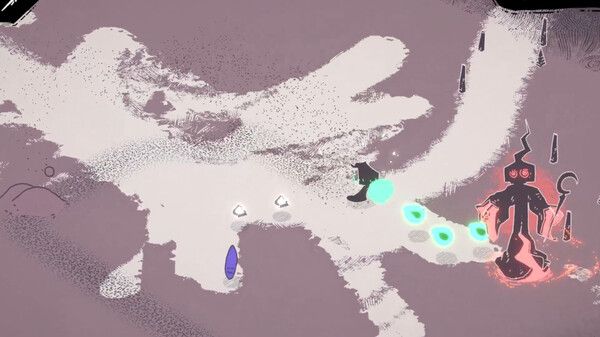Hauntii on Steam - User reviews, Price & Information
An action adventure about a ghost’s journey through the afterlife. Possess enemies and the environment and fend off hostile spirits in pursuit of starry fragments from a past life.
Hauntii is a exploration, cute and puzzle-platformer game
developed by Moonloop Games
and published by Firestoke.
Released on May 23rd 2024 is available only on Windows
in 9 languages: English, French, German, Spanish - Spain, Japanese, Korean, Simplified Chinese, Spanish - Latin America and Traditional Chinese.
It has received 344 reviews of which 316 were positive and 28 were negative resulting in a rating of 8.5 out of 10. 😎
The game is currently priced at 9.99€ on Steam with a 50% discount, but you can find it for less on Gamivo.
The Steam community has classified Hauntii into these genres:
Media & Screenshots
Get an in-depth look at Hauntii through various videos and screenshots.
System requirements
These are the minimum specifications needed to play the game. For the best experience, we recommend that you verify them.
- OS *: Windows 8
- Processor: Intel Core i5-6400 or equivalent
- Memory: 6 GB RAM
- Graphics: GeForce GTX 950 or equivalent
- DirectX: Version 11
- Storage: 4 GB available space
User reviews & Ratings
Explore reviews from Steam users sharing their experiences and what they love about the game.
Similar games
View allFrequently Asked Questions
Data sources
The information presented on this page is sourced from reliable APIs to ensure accuracy and relevance. We utilize the Steam API to gather data on game details, including titles, descriptions, prices, and user reviews. This allows us to provide you with the most up-to-date information directly from the Steam platform.
Additionally, we incorporate data from the SteamSpy API, which offers insights into game sales and player statistics. This helps us present a comprehensive view of each game's popularity and performance within the gaming community.
Last Updates| Steam data | 21 October 2025 15:00 |
|---|---|
| SteamSpy data | 23 October 2025 12:30 |
| Steam price | 29 October 2025 04:49 |
| Steam reviews | 28 October 2025 03:52 |
If you'd like to dive deeper into the details about Hauntii, we invite you to check out a few dedicated websites that offer extensive information and insights. These platforms provide valuable data, analysis, and user-generated reports to enhance your understanding of the game and its performance.
- SteamDB - A comprehensive database of everything on Steam about Hauntii
- SteamCharts - Analysis of Hauntii concurrent players on Steam
- ProtonDB - Crowdsourced reports on Linux and Steam Deck Hauntii compatibility





























